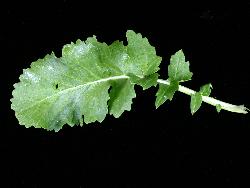- Taxon
- Gallery
Annual to perennial. Taproot swollen or slender. Stems usually green, (10)–20–80–(100) cm tall. Rosette and lower stem lvs lyrate-pinnate; terminal leaflet 3–6–(10) × 3–6–(10) cm, as wide or narrower than rest of lf; lateral leaflets in 1–8 pairs. Stem lvs simple or with 1 pair of basal lobes, orbicular to lanceolate, 1–6 cm long. Racemes 15–40–(60) cm long. Pedicels 1–2 cm long, stout at fruiting. Sepals 6–9 × 1–2 mm. Petals yellow, white, brownish, pink, or mauve, usually mauve-veined, 13–20 mm long. Silique (1)–2–8-seeded, cylindric, constricted between seeds, breaking into segments when ripe, weakly to strongly ribbed, tapering at apex, (10)–20–60–(80) × (2)–3–8–(9) mm. Seeds 1.5–3 mm long.
[From: Webb et al. (1988) Flora of New Zealand. Volume 4.]
| Category | Number |
|---|---|
| Exotic: Fully Naturalised | 2 |
| Total | 2 |




